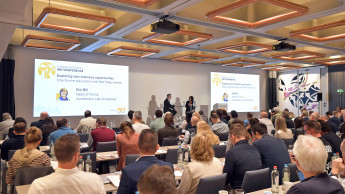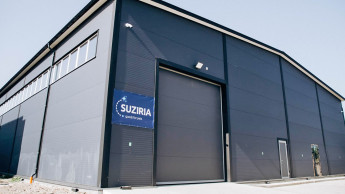No matter whether in Bologna, Lyon or Copenhagen, the aquatics segment is one of the most important product groups in the pet supplies trade. Only there can ornamental fish enthusiasts find an extensive and varied range of fish, food, care products and equipment. And it’s only in speciality stores that aquarists can seek swift, expert assistance if their aquarium isn’t functioning as it should. So it’s not surprising that the majority of aquatic products are sold not in the supermarket, but in pet shops or garden centres. Many folk, though, don’t just want a water paradise within their own four walls. Lots of people who have gardens want to enhance their retreat further by adding a pond. The number of garden ponds in Europe is estimated to be around 8 million at present. This figure could increase in the next few years. For a long time the market was split between DIY stores, garden centres and specialist suppliers, but in recent years the pet supplies sector has embraced the garden pond segment more strongly. This is mostly due to the belief that there can’t be much of a difference between freshwater aquariums and the pond business. This is a fallacy. Aquarium enthusiasts usually take up their hobby in childhood, and then mostly abandon it at the onset of puberty, only to resume it as an adult. The drop-out rate for aquarium hobbyists is approx. 50 per cent. An aquarium, a few fish, food, equipment – it can all be acquired quite cheaply. And if it’s not a success, you can give it up; after all, you haven’t wasted too much money on it. That’s the widespread attitude of new hobbyists. A garden pond is an entirely different kettle of fish. You need to invest a couple of thousand before you can enjoy the plash of water in your own garden. An aquarium requires a bit of space in the living room; for a garden pond, more often than not a landscape gardener is required, to plan the dimensions and construct it. But once a consumer is bitten by the pond bug, he’ll want to add to his oasis continuously: more up-to-date technology, larger and better fish, or exotic decorations, streams etc. A pond is an acquisition for life, and the drop-out rate among pond owners is correspondingly low. The pet supplies sector can participate in the success of the pond business. You can read on Page 20 of this issue how to create a successful pond department in the pet store. But be warned against getting too carried away. If…

There’s no business like pond business
No matter whether in Bologna, Lyon or Copenhagen, the aquatics segment is one of the most important product groups in the pet supplies trade. Only there can ornamental fish enthusiasts find an extensive and varied range of fish, food, care products and equipment. And it’s only in speciality stores that aquarists can seek swift, expert assistance if their aquarium isn’t functioning as it should. So it’s not surprising that the majority of aquatic products are sold not in the supermarket, but in pet shops or garden centres. Many folk, though, don’t just want a water paradise within their own four walls. Lots of people who have gardens want to enhance their retreat further by adding a pond. The number of garden ponds in Europe is estimated to be around 8 million at present. This figure could increase in the next few years. For a long time the market was split between DIY stores, garden centres and specialist suppliers, but in recent years the pet supplies sector has embraced the garden pond segment more strongly. This is mostly due to the belief that there can’t be much of a difference between freshwater aquariums and the pond business. This is a fallacy. Aquarium enthusiasts usually take up their hobby in childhood, and then mostly abandon it at the onset of puberty, only to resume it as an adult. The drop-out rate for aquarium hobbyists is approx. 50 per cent. An aquarium, a few fish, food, equipment – it can all be acquired quite cheaply. And if it’s not a success, you can give it up; after all, you haven’t wasted too much money on it. That’s the widespread attitude of new hobbyists. A garden pond is an entirely different kettle of fish. You need to invest a couple of thousand before you can enjoy the plash of water in your own garden. An aquarium requires a bit of space in the living room; for a garden pond, more often than not a landscape gardener is required, to plan the dimensions and construct it. But once a consumer is bitten by the pond bug, he’ll want to add to his oasis continuously: more up-to-date technology, larger and better fish, or exotic decorations, streams etc. A pond is an acquisition for life, and the drop-out rate among pond owners is correspondingly low. The pet supplies sector can participate in the success of the pond business. You can read on Page 20 of this issue how to create a successful pond department in the pet store. But be warned against getting too carried away. If…

 Menü
Menü






 3-4/2007
3-4/2007












 Newsletter
Newsletter